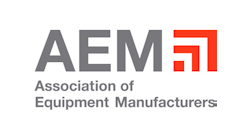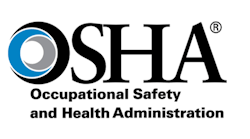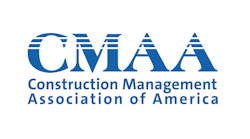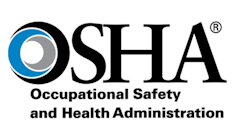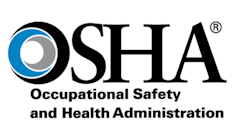I’ve been in the garbage business for more than 50 years. I’ve never seen a safety incentive program that has worked beyond the initial phase, although there may be some out there. Safety incentive programs usually can’t sustain for a few reasons.
First, incentive programs are time consuming and tedious to manage.
Second, when the program doesn’t live up to its hype, managers and workers alike lose their interest.
Third, and probably most important, once an employee has an injury or gets in an accident—no matter how minor—he or she is out of the running for the incentive, so they throw their hands up, shrug their shoulders, and give up. The incentive program has lost its meaning for them.
I’m not a fan of any type of incentive program, safety or otherwise. A coworker once told me: the only people who benefit from an incentive program are those who would qualify even if there wasn’t a program. Over the years, his words have rung true many times. Incentive programs are an easy way out for managers who don’t want to hold the tough line on safety. In business, the easy way out usually leads to a dead end.
A Google search for “benefits of safety incentive programs” returned more than 1.5 million results. There’s no shortage of opinions on the subject, pro and con. You don’t have to go beyond the first page to find your answer, either for or against. I’m in the against camp.
Here are two articles that caught my attention:
The first, “Is OSHA Wrong about Safety Incentive Programs?“, lists two reasons why OSHA discourages safety incentive programs. Reason one is that OSHA is concerned workers may not report legitimate injuries in order to receive a bonus. Of course, serious injuries will always get reported. It’s the minor ones that may get buried under the rug. The second reason: OSHA’s “argument is that rewarding departments who perform safely is “discriminatory” against those departments with injuries”.
This one is a stretch even for me. The point is that OSHA discourages safety incentive programs. In addition, the safety incentive program will surely include truck accidents. How many minor fender benders will go unreported, just like they do now. Take a walk around the yard after the crews have gone home for the day—see how many trucks have bumps and scrapes. Then, check to see if they were reported. My guess is not many.
The second article, “Safety Incentive Programs: A Critical Assessment“, lists pros and cons, recommendations, and concludes with: “On a short-term or individual-case basis, safety incentives may appear to influence outcomes, the intended consequences. However, over the long term, rewards have seldom demonstrated any significant influence in generating lasting behavioral changes. In addition, the unintended consequences and side effects provide incentive for the wrong behaviors and produce the wrong results.”
Another article to take note of (not part of my Google search) is by John Trotti, Group Editor at Forester Media. In his article, “Safety: Grampaw Pettibone’s Law“, from the November/December 2016 MSW Management issue, Trotti describes how the Navy substantially improved their safety record. It’s a no-nonsense approach that calls for developing a detailed set of Standard Operating Procedures (SOP), building a safety culture, and holding people accountable. He says: “… the development of a safety mindset and the culture that sustains it is an exercise of will…yours to begin with, but then your supervisors, and through them on down the line until everyone in your organization knows what’s expected.”
I can assure you there is no safety incentive in Grampaw Pettibone’s program. Safety is a serious business that requires a serious effort. A worker’s only safety incentive should be to go home at the end of the day safe and sound to his or her family.
A friend of mine, Edward Maghakian, has always taught that safety is an attitude. It is up to each individual to be safe. You can’t force safety on any one. What you can do, though, is build a strong safety culture, one that provides safe equipment, promotes safe work habits, and doesn’t tolerate unsafe behavior.
Like anything else, safety starts at the top—and I’m talking about the very top. Those at the highest levels of the organizations, be it elected officials or CEOs, must believe in and promote safety every step of the way. There are no shortcuts for safety; it’s a long steady climb, with tough stretches along the way.
At the operating level, where the rubber meets the road, managers and supervisors must orally and visually promote safety and continually keep it at the forefront of everyone’s mind—drivers, mechanics, and office workers.
Here are a few things that can help promote a strong safety culture:
- Hold regular safety meetings (at least monthly) with agendas and sign-in sheets that address all OSHA-required topics and local issues—like speeding, weather, if school is in or out, and any other topic that is important to the organization. Don’t overload the agenda. Keep the meetings at 20 minutes or less. Always give frontline workers an opportunity to ask questions.
- If you have a large operation, have the supervisors circulate around the meeting room to make sure folks are paying attention to the safety presentations.
- Have the supervisors develop and deliver the safety presentations. They have the connection with the frontline workers. It’s the supervisors’ responsibility to make sure their crews are working safe and practice safe working behaviors. Safety personnel play an important role with any safety program. One of them, though, is not delivering presentations at safety meetings. That is the supervisors’ responsibility.
- Hold weekly tailgate meetings with an agenda and sign-in sheets, 5 to10 minutes max. This is the forum for supervisors to discuss topics important to their section. They should always include one safety topic that needs attention—speeding, weather, school, or overweight loads, to name a few.
- Ask workers about their safety concerns. Take them seriously and act appropriately.
- Develop a comprehensive training program that includes safe working habits. Make sure to incorporate the original equipment manufacturers training included in the operating manuals.
- Conduct monthly safety inspections. Develop a checklist or ask the insurance company for one. Add safety items that are important to your organization.
- Track accident, injury, and illness statistics. Incorporate near misses or close calls into the statistics—they provide a training opportunity, and it opens the door to either developing or updating SOPs.
- Prominently, and tastefully, display safety statistics, posters, slogans, and required postings where frontline workers congregate.
- Make sure all frontline workers wear high-visibility clothing and personal protective equipment (PPE), as required, at all times when on the job. In addition, all managers and supervisors must wear high-visibility clothing whenever they walk into the yard, shop, processing facility, or on-the-road visiting crews. One last thing on this point: As the boss, you must insist that all visitors, mayors, elected officials (CEOs included), wear high-visibility clothing and PPE where appropriate. Keep in mind, the closer you are to the frontline workers, the more you have to mimic their environment.
- Develop/review SOPs for all aspects of the operation—Grandpaw Pettibone’s Law in action. Give special attention to those that include elements of safety. Make sure the SOPs are up to date with the latest information.
- Hold everyone accountable. Don’t tolerate unsafe behavior. This is the single most important action that must be taken to ensure a strong safety culture.
Review your safety program and give it a tune up, and start building a strong safety culture. Ask a third party to help you out, someone who is not familiar with your operation but understands safety and your business. Fresh eyes can uncover the issues that are holding you back from building a first class safety program and a strong safety culture.
Go all in on safety…first, last, and in between.


